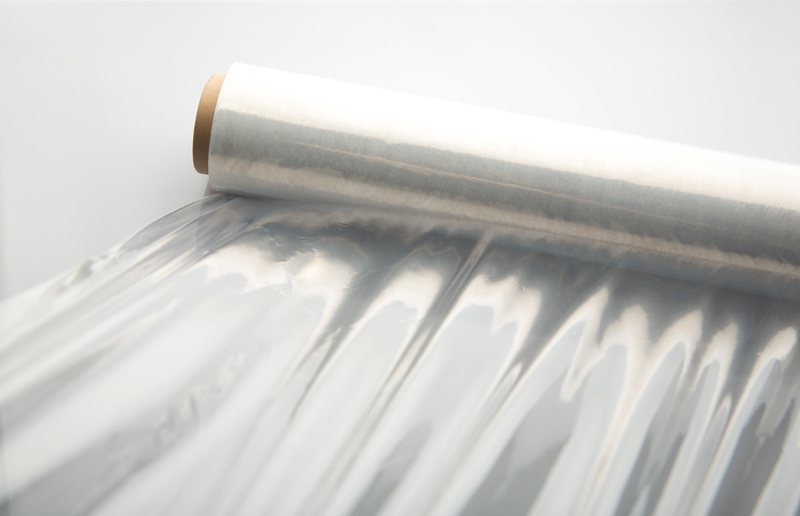Step-by-Step to Achieving Streak-Free Window Clarity
Posted on 26/05/2025
Step-by-Step to Achieving Streak-Free Window Clarity
Windows are the eyes of your home, offering light, views, and that essential connection with the outdoors. Yet, nothing ruins a beautiful view like smudged, foggy, or streaked glass panes. If you're on the quest for streak-free window clarity, you've come to the right place. In this comprehensive guide, we'll take you through a detailed, step-by-step process to achieving crystal-clear, streakless windows that will leave visitors impressed and brighten up any space.

Why Streak-Free Windows Matter
- Aesthetic appeal - Clean windows instantly enhance the look of your home or office.
- Optimized natural light - Grime on glass blocks sunlight, making rooms appear dim.
- Prolonged window lifespan - Regular maintenance prevents corrosion and glass damage.
- Energy efficiency - Clean windows maximize insulating properties, reducing energy costs.
Investing time in proper window cleaning pays off in numerous ways. But the crux of the matter lies not just in cleaning, but cleaning right; many are left wondering how to remove those stubborn streaks that linger no matter how much they wipe.
Understanding What Causes Window Streaks
Before diving into the best methods for streak-free window cleaning, let's identify what actually causes those pesky marks:
- Improper cleaning solutions - Some products leave residue.
- Hard water - Mineral deposits can streak and cloud glass.
- Dirty tools or cloths - Re-depositing dirt as you clean inevitably leads to streaks.
- Drying time - Letting cleaning solution dry on the glass before wiping can leave marks.
- Environmental factors - Wind and sun speed up drying before the window is properly wiped.
Knowing these factors helps you understand the importance of both technique and equipment for a streak-free finish.
Essential Tools and Supplies for Streakless Window Cleaning
Preparation is key. Gather your essentials so you can achieve streakless clarity without hitches:
- Bucket - For mixing and carrying cleaning solution.
- Squeegee - A high-quality, rubber-edged squeegee is non-negotiable for professional results.
- Microfiber cloths - Lint-free, super-absorbent, and perfect for polishing.
- Soft-bristle brush or sponge - For scrubbing grime.
- Cleaning solution - Either commercial glass cleaner or a homemade formula (explained below).
- Spray Bottle - For even distribution, especially on small panes.
- Dry, absorbent towels - For catching drips and drying edges.
- Gloves - To protect your hands.
- Extension pole (if necessary) - For high or hard-to-reach windows.
- Old toothbrush - Great for cleaning corners and window tracks.
DIY Streak-Free Window Cleaning Formula
While commercial window cleaners can be effective, making your own solution is cost-effective and avoids harsh chemicals. Here's a tried-and-true recipe:
- 2 cups of water
- 1/4 cup of white vinegar
- 1/2 teaspoon of dish soap (preferably unscented and non-moisturizing)
Mix these in a spray bottle, shake gently, and use as needed. Vinegar acts as a powerful degreaser and leaves glass gleaming, while a dash of dish soap helps lift stubborn dirt. *Avoid using too much soap, as this can leave behind residue that causes streaks.
Step-by-Step: How to Clean Windows for Crystal Clarity
Step 1: Pick the Right Time
One of the most overlooked aspects of achieving streak-free window clarity is timing. Choose an overcast day or a time when your windows are shaded. Direct sunlight causes cleaning solution to evaporate too quickly, which contributes to streaking.
Step 2: Remove Dust, Cobwebs, and Loose Grime
Don't start with the cleaning solution just yet! Use a dry brush or microfiber cloth to sweep away loose dust, cobwebs, and debris on both the glass and the frames. Pay special attention to corners and window tracks, where buildup can collect and cause smudges later in the process.
Step 3: Wash Window Frames and Sills
Frames first, glass second: Clean frames and sills with a damp cloth and mild soap, especially if they're particularly dirty. This step prevents dirt from moving onto the glass while cleaning, ensuring a streakless finish.
Step 4: Apply the Cleaning Solution
- Spray or sponge your cleaning solution liberally onto the window.
- Cover every inch, especially corners and any sticky spots.
- For extra grimy areas, let the solution sit for a minute before moving on.
Step 5: Use a Sponge or Brush to Loosen Dirt
Gently scrub using a soft sponge or brush, focusing on stubborn marks or bird droppings. Be gentle to avoid scratching and remember to rinse your scrubber as needed to prevent re-depositing dirt on the glass.
Step 6: The Squeegee Technique for a Streakless Finish
- Start at the top-left corner (if you're right-handed; reverse for lefties).
- Wipe the squeegee horizontally across the window, keeping consistent, light pressure.
- Wipe the squeegee blade after each pass with a clean cloth to prevent streaks.
- Overlap each stroke slightly to avoid missed areas.
- For smaller panes, consider vertical strokes; just remain consistent across all panes.
Pro Tip: For extra-wide windows, use an 'S' motion with the squeegee to ensure complete coverage and minimal lines.
Step 7: Dry and Buff Edges
- Take a dry microfiber cloth or a clean, lint-free towel.
- Run it around the edges of each pane to catch any drips or left-over solution.
- For extra shine, lightly polish the entire window with a fresh, dry cloth.
Step 8: Final Inspection
Stand back and check your work from several angles. Look for missed spots or streaks. If necessary, spot-clean with a *slightly damp* microfiber cloth, then buff dry.
Extra Tips for Streak-Free Window Cleaning
- Use distilled water in your solution if you have hard tap water. Minerals can leave spots and streaks.
- Avoid paper towels and newspapers. Modern paper products can leave lint and inks may smear.
- Change your water frequently during the job--dirty water leads to dirty windows.
- Replace your squeegee blade regularly for the best results. A nicked or hard blade leaves streaks.
- For inside windows, place a towel under the sill to catch drips and protect your flooring.
- Clean high windows safely using an extension pole or consider hiring a professional for risky jobs.
Streak-Free Clarity for Special Cases
Dealing with Hard Water Stains
Mineral deposits from hard water can be stubborn, but not invincible. For best results:
- Mix equal parts white vinegar and water.
- Soak a cloth in the solution and apply to the glass, letting it sit for 5-10 minutes.
- Scrub gently with a non-abrasive pad, then rinse and squeegee dry.
- Repeat if necessary for tough spots.
Handling Greasy, Oily Residue
In kitchens or commercial settings, windows can collect greasy films. Add a few extra drops of dish soap to your solution, but make sure to rinse thoroughly, as soap residue can be a major contributor to streaking.
Condensation & Moisture Issues
Frequent fogging on the inside of your windows? You may be dealing with humidity problems or broken window seals. Consider using a dehumidifier indoors and reseal or replace compromised window panes for lasting clarity.
How Often Should You Clean Windows for Maximum Clarity?
- Residential windows: At least twice a year (spring and autumn). Increase frequency if you live near a busy road, in a high-pollen area, or near the sea.
- Commercial spaces: Monthly, or even biweekly for retail storefronts or street-level offices.
- High-traffic and kitchen windows: Every 2-4 weeks to prevent buildup.
- After major storms or renovations: Clean windows immediately to remove debris and prevent etching from dust and grit.
Common Myths About Streak-Free Window Cleaning
- "Newspaper is best for cleaning windows."
While newspaper was once effective, today's inks can leave stains or streaks, and the paper may scratch modern eco-glass. - "The more product, the better."
Excess cleaner means more wiping and much greater chance of streaking. Less is often more when it comes to crystal-clear windows. - "Windows should always be cleaned on sunny days."
Actually, sun-baked glass dries too quickly, making streaks more likely. - "Any cloth will do."
Only lint-free, soft materials like microfiber give true streak-free results.

Frequently Asked Questions About Streak-Free Window Clarity
Can I use ammonia-based cleaners for ultra-clear windows?
You can, but be cautious - ammonia has a strong smell and can damage certain window frames or treatments. For most homes, vinegar-based cleaning is safer and equally effective.
Are there professional tools that really make a difference?
Yes! Investing in a professional-grade squeegee and microfiber cloths produces a dramatic difference compared to household paper towels and cheap tools. The right equipment = fewer streaks, less work.
What's the best way to clean high or exterior windows?
Use an extension pole with a squeegee for high spots. Secure ladders, or consider hiring a window cleaning service for higher floors or dangerous locations.
My windows look cloudy after cleaning--what's wrong?
Cloudiness can be residue from cleaner, hard water, or even damaged seals in double glazing. Try rinsing and buffing again, and if fog persists between panes, professional repair may be needed.
Conclusion: The Window to a Brighter Space
Achieving streak-free window clarity isn't a mysterious art--it's a science, blending the correct cleaning solutions, tools, and techniques for maximum results. With these step-by-step instructions and expert tips, you can banish streaks for good, letting in more light and enhancing the look and feel of your home or workspace.
Consistency is key: Set a regular window-cleaning schedule, replace worn-out tools, and stick with methods proven to deliver flawless clarity. You'll notice the difference not just in your view, but in the lightness and energy of your entire space. So grab your bucket, and make your windows sparkle like never before!
For more tips, tricks, and maintenance advice on achieving perfect window clarity, bookmark this guide and transform your space--one gleaming window at a time.




